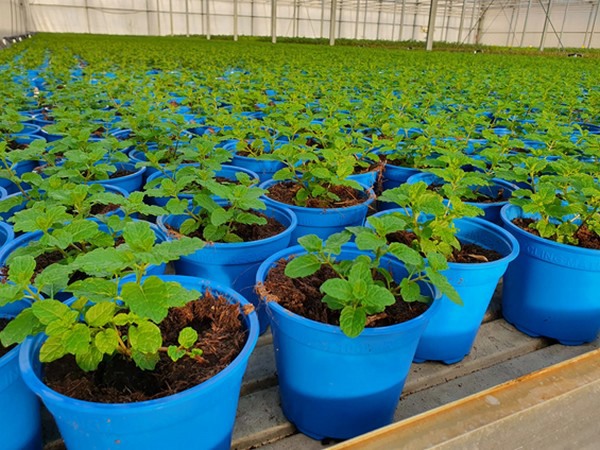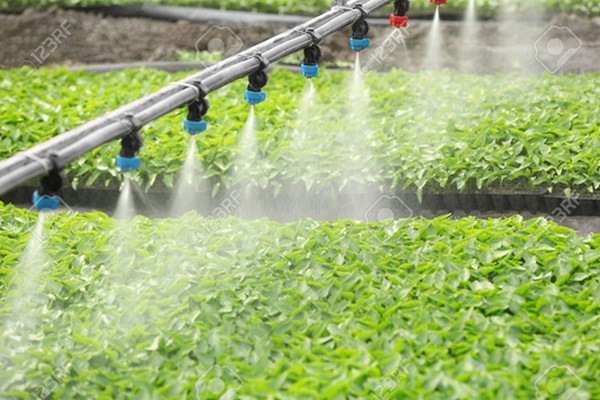Hishtil has made it its goal to provide economic and environmentally friendly horticultural solutions that improve the quality of produce. "A key facet of our research is to study how we can extend the shelf life of our plants at our client’s sites. As durable as our plants may be, however, they still need the grower's help to survive longer in the nursery or greenhouse, for instance through disciplined watering," says Haim Rosenblum, Histil's Marketing and Sales Division Manager. Together with Ephraim Weil, MSc. Agronomist, Plant Protection Specialist Hishtil (and edited by Oren Bar-Ner), they wrote down the best practice for extending the shelf life of greenhouse crops.

Whether you own or manage a nursery or are an agriculturalist specializing in greenhouse crops, it is probably safe to say that much of your business relies upon being able to extend the life of your plants, while they are still growing under your roof.
Much and more has been said about means and methods for maintaining greenhouse crops for extended periods of time. These include adjusting your water regime, adjusting fertilization rates, using PGRs, pinching, temperature control, etc. Such interventions are fundamental actions that you can take to physiologically inhibit plant growth. As you might expect, however, things are a bit more challenging when speaking of herbs, explains Weil. "Even more so in the case of organic herbs and vegetables, where we are prevented from using some of the aforementioned tools, such as PGRs, and other tools are less effective."

Below, they will share some of their thoughts and insights on how one can cope with such challenges and prolong the shelf life of these more delicate types of plants.
The top 4 tips and recommendations for extending greenhouse crops shelf life are:
1. Watering
"Give greater attention to your water and fertilizer regimes, watering less, but on the other hand, keeping a closer watch, carefully examining the plants a couple times a day. Our goal is to reduce daily levels of irrigation. Every drop of water we save, will help us keep the plants longer."
2. Smart growing media
"Before planting young plants in pots or packs we have an opportunity to influence growth, throughout the entire growth period. This can be done by adjusting the composition of the growing media, thereby changing its physical or chemical properties. Adding additives that lower the media’s water retention, such as fibres, coco, or perlite, increases our control over water balance and growth rates."
3. Smart fertilizing
"Most growing medias include a basic quantity of fertilizer, impacting the media's chemical properties and promoting plant growth. Again, by incorporating additives with a lower fertilizer level or without fertilizer at all, such as peat, coco, etc., we can reduce total fertilization, thereby stunting growth rates."
4. More sun
"Another tool in our growth-slowing arsenal is solar radiation. In areas where the sun shines brightly, we can expose plants that grow fully or partially in the shade to higher levels of sunshine, which will cause decelerated growth and a more compact appearance. Increased sun exposure is not recommended for the entire growth period, rather, it can be used after the plant establishment phase, at alternate periods during the plant’s growth, or on an ad-hoc basis based on the plant’s appearance."
It is important to note that taking any of the aforementioned actions should be done gradually and cautiously to avoid overdoing it and possibly harming the plants, Weil stresses.
As helpful as all of these actions might be, the proverbial warning that “there are no free lunches” applies here as well. "The use of these methods may result in a less attractive plant appearance. However, while the lunch might not be free, with the right precautions, we can usually get our money back, i.e. if we closely monitor our slow-growth plants for such changes, we can choose to stop at a time where it will still be possible to turn the clock back and supply our customers with high-quality, attractive plants."
In summary, with the right mindset and vigilant application of these practices, your plants will “live long an prosper”, they conclude.
For more informati on
on
Hishtil
Email: [email protected]
www.hishtil.com










